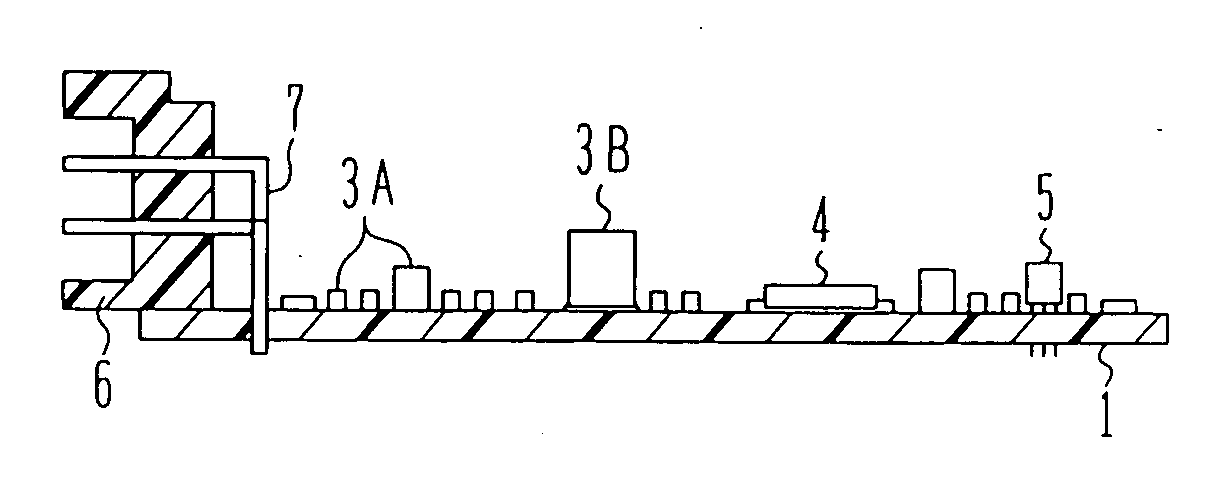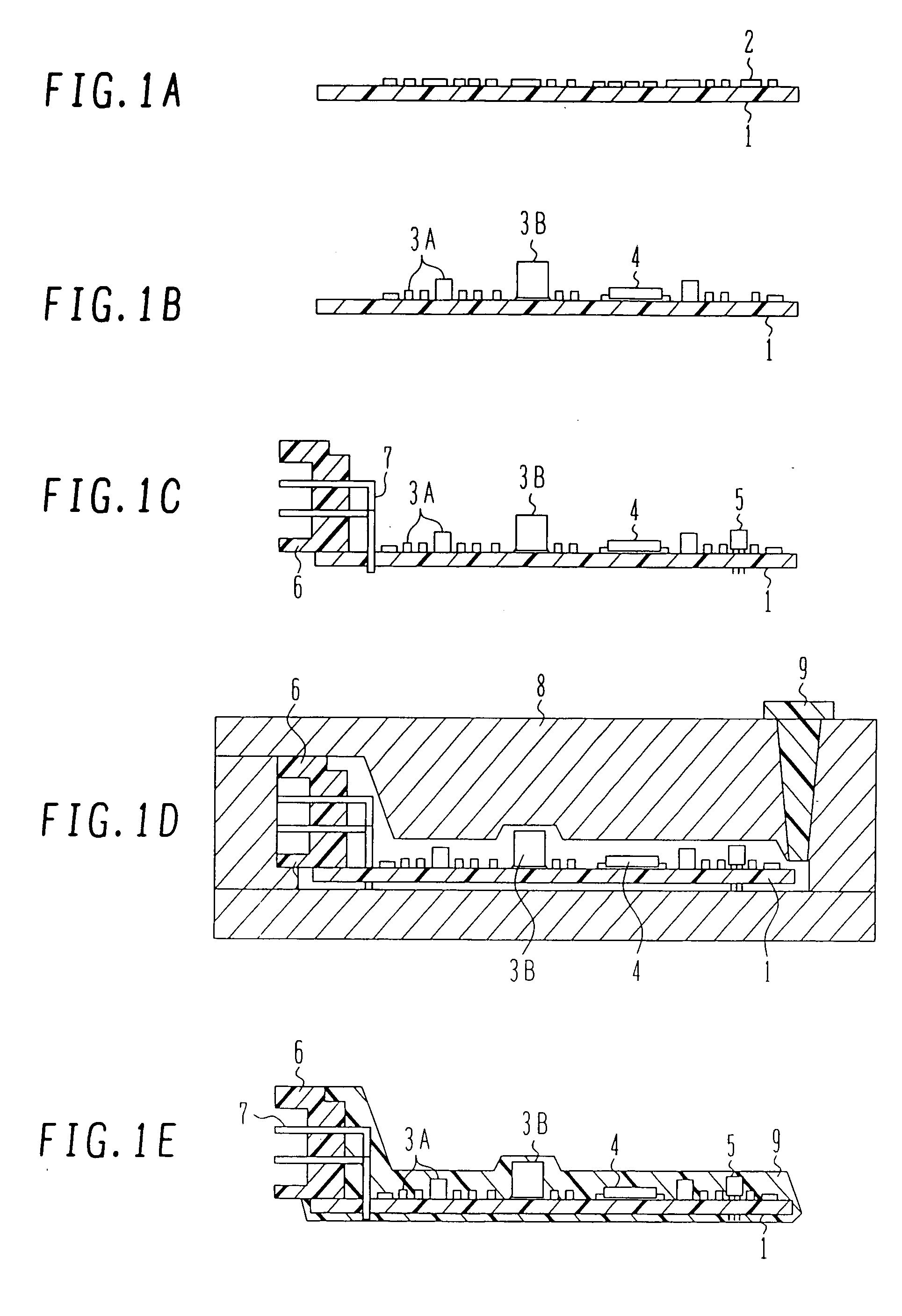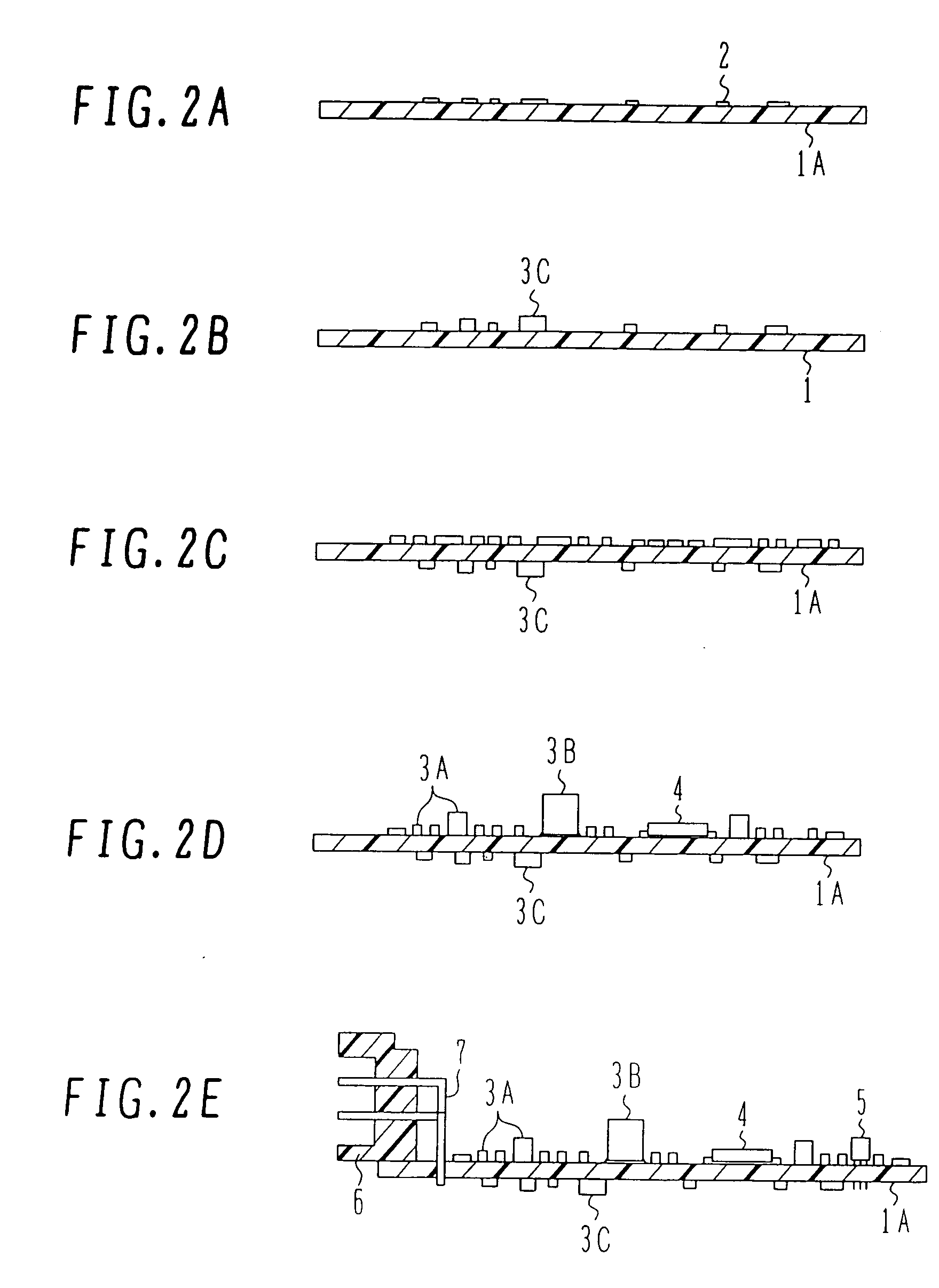Module and method for fabricating the same
- Summary
- Abstract
- Description
- Claims
- Application Information
AI Technical Summary
Benefits of technology
Problems solved by technology
Method used
Image
Examples
first embodiment
[0023] The construction of a module and a method for fabricating the module, according to the present invention, will be first described below with reference to FIGS. 1A-1E. The module of this embodiment is used as a control unit for automobiles, ships and motors, and a circuit board is formed of a two-layered resin printed board.
[0024]FIGS. 1A-1E illustrate successive steps of the method for fabricating the module according to the first embodiment of the present invention.
[0025] As shown in FIG. 1A, an Sn / Pb eutectic-crystal solder paste 2 is printed on one surface of a two-layered resin printed board 1. The resin printed board 1 has dimensions of 100×70 mm and has physical properties represented by the glass transition temperature of 130° C. and the linear expansion coefficient of 15 ppm / ° C.
[0026] Then, as shown in FIG. 1B, short (low height) chip components 3A, e.g., a chip resistor and a ceramic capacitor, a tall (high height) chip component 3B, e.g., an aluminum capacitor, a...
second embodiment
[0059] Next, the construction of a module and a method for fabricating the module, according to the present invention, will be described below with reference to FIGS. 2A-2G. The module of this embodiment is used as a control unit for automobiles, ships and motors, and a circuit board is formed of a four-layered resin printed board.
[0060]FIGS. 2A-2G illustrate successive steps of the method for fabricating the module according to the second embodiment of the present invention. Note that the same reference numerals as those in FIG. 1 denote the same members.
[0061] As shown in FIG. 2A, an Sn / Pb eutectic-crystal solder paste 2 is printed on one surface of a four-layered resin board 1A that has dimensions of 90×70 mm and has physical properties represented by the glass transition temperature of 170° C. and the linear expansion coefficient of 15 ppm / ° C.
[0062] Then, as shown in FIG. 2B, chip components 3C, e.g., a chip resistor and a ceramic capacitor, are mounted on the circuit board 1...
third embodiment
[0069] The construction of a module and a method for fabricating the module, according to the present invention, will be described below with reference to FIG. 3. The module of this embodiment is used as a control unit for automobiles, ships and motors, and a circuit board is formed of a four-layered resin printed board.
[0070]FIGS. 3A-3F illustrate successive steps of the method for fabricating the module according to the third embodiment of the present invention. Note that the same reference numerals as those in FIGS. 1 and 2 denote the same members.
[0071] As shown in FIG. 3A, an Sn / Ag / Cu solder paste 2A is printed on one surface of a four-layered resin board 1A that has dimensions of 100×70 mm and has physical properties represented by the glass transition temperature of 170° C. and the linear expansion coefficient of 15 ppm / ° C.
[0072] Then, as shown in FIG. 3B, chip components 3A, e.g., a chip resistor and a ceramic capacitor, a chip component 3B, e.g., an aluminum capacitor, a...
PUM
| Property | Measurement | Unit |
|---|---|---|
| Temperature | aaaaa | aaaaa |
| Temperature | aaaaa | aaaaa |
| Pressure | aaaaa | aaaaa |
Abstract
Description
Claims
Application Information
 Login to View More
Login to View More - R&D
- Intellectual Property
- Life Sciences
- Materials
- Tech Scout
- Unparalleled Data Quality
- Higher Quality Content
- 60% Fewer Hallucinations
Browse by: Latest US Patents, China's latest patents, Technical Efficacy Thesaurus, Application Domain, Technology Topic, Popular Technical Reports.
© 2025 PatSnap. All rights reserved.Legal|Privacy policy|Modern Slavery Act Transparency Statement|Sitemap|About US| Contact US: help@patsnap.com



